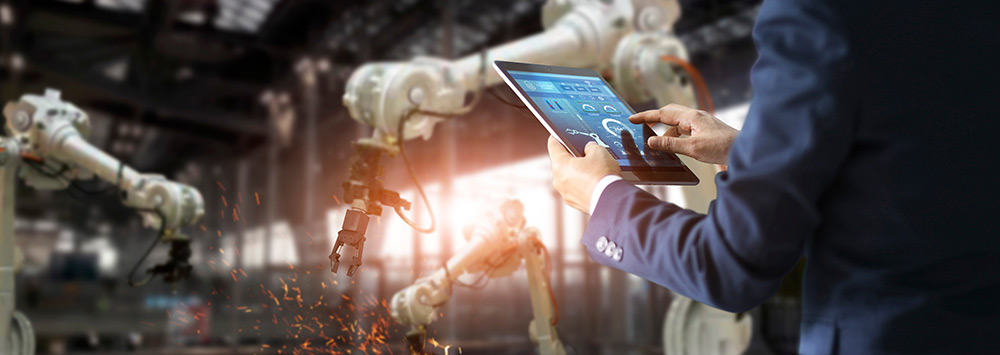Perhaps the biggest challenge of the current crisis is it’s constantly evolving and uneven nature. This leads to the biggest challenge facing manufactures, regardless of location: supply chain disruptions.
Not only do supply chain shifts vary greatly from country to country, but the situation on the ground constantly evolves following the new developments in the ongoing pandemic response.
We are faced with a reality where the solutions that worked yesterday will not necessarily continue working tomorrow. The situation on the ground requires constant reassessment, quick decision making and nimble execution.
Let’s look at the numbers when it comes to Coronavirus and manufacturing. The U.S. manufacturing sector contracted in March amid the COVID-19 fallout, with the Purchasing Managers’ Index (PMI) falling to 49.1 percent, down one percentage point from February. However, it’s important to understand that the effects of the pandemic are not uniform. While many industries see huge productivity losses, some production lines, for example, food, beverage & tobacco products, are experiencing a record number of orders due to COVID-19.
Another unique development we are seeing across the world is the surging demand for the production of critical equipment such as ventilators, surgical masks and other PPE products combined with a decline in demand for other consumer products. These rapid shifts have forced manufacturers to adapt their production lines as quickly as possible to produce in-demand products, abandoning their core production in a manner inconceivable before. It’s not just supply chains that are affected – consumer behavior is shifting as well, creating temporary high demand for specific products, straining production lines even further.
Additionally, many manufacturing executives are forced to work from home, limiting visibility into the production floor, supply chain, and business analytics. Despite the availability of digital solutions, production floor management often remains to be paper-based, making it hard to get a picture of what’s happening for employees who cannot physically be there.
As a result, the ability to monitor and collect data remotely becomes a crucial capability, and is no longer just “a nice to have” feature.
Businesses around the world are looking to technology to assist them with managing the “new normal”, and manufacturers are no different. Fortunately, there are a number of ways that factories can become more efficient, profitable, and easier to manage using technology.
How Industry 4.0 Technologies Can Help
Coronavirus and manufacturing do not mix well, but despite all challenges, supply chain managers can build resilience amidst the current COVID-19 pandemic.
There are a lot of constantly shifting variables. Some industries, like agriculture, are attempting to move towards a “direct to consumer” model as the result of COVID-19. This is a change that might stick with us long after the crisis is resolved, where skipping processing and shipping stages altogether would become the new normal for many products that weren’t distributed this way before.
While supply chains are contracting from global to local and back again, supply chains will always depend on many moving parts. So no matter what shifts we are seeing, the ability to adapt quickly to changes will continue to be crucial. And that is why the transition to Industry 4.0 is no longer optional.
Tool 1 for Manufacturers: Real Time Data
Amid the coronavirus crisis, business leaders must make rapid and immediate decisions to sustain business operations and protect their employees. One of the main benefits of Industry 4.0 is the reduced uncertainty by virtue of introducing the real-time data and analytics into the decision making process. Faced with rapid shifts in supply chains, executives need reliable and actionable data to mitigate risks in order to keep the production going.
Supply chains are adapting to the various restrictions, quarantines, and regulations being imposed by governments around the world. Without real time supply chain information, there’s a significant risk that the arrival key equipment and parts will be delayed, potentially resulting in major disruptions.
Measuring OEE and machine data in real time is also critical for manufacturers right now. Customers are likely asking for discounts, making it all the more important that manufacturers are able to calculate their OEE to ensure they remain in the black. You don’t want to end up going back over your data only to discover that certain orders you thought were profitable actually weren’t.
While most supply chain organizations have a risk management strategy, the current outbreak is not a typical event. Faced with a black swan event such as this, manufacturing managers are faced with challenges on a scale that exceeds anything that we could have prepared for. Just because we couldn’t prepare for it, doesn’t mean we can’t adapt. It won’t be possible without real-time, supply chain, manufacturing, and business data.
Tool 2: Remote access to Manufacturing Executives and Employees
As lockdowns expand, physical presence on the factory floor often is out of the question. As many factories are affected by lockdowns the spread of COVID-19 and manufacturers productivity levels become increasingly intertwined. While previously paper-based and manual processes were a mere inconvenience, suddenly, the old way of doing things is no longer viable at all.
If business leaders are working from home, they can’t make informed decisions using paper and clipboard based processes. They need to see their ERP data as it currently stands – and not wait for when they return, or when someone in the factory has time to update them.
Ensuring remote access is another piece of the puzzle for a successful Coronavirus crisis management. Providing access to all relevant data, reports, and machines remotely to people who need these data can make all the difference.
How FactoryEye can empower manufacturers to deal with the supply chain disruption
The impact of COVID-19 on supply chains is not going to be resolved in the foreseeable future.
I have no doubt that the shifts in how the supply chains function will stay with us for a while. But there are some positive effects to the system-wide shock we are experiencing. The aftermath will force manufacturers to strengthen their long-term resilience strategies in order to manage future challenges. New digital transformation initiatives will be fast-tracked across the board, helping manufacturers transition towards Industry 4.0.
To deal with the crisis, supply chain managers need to take a data-driven approach to risk management and concentrate on building sufficient flexibility into their manufacturing processes to protect against future disruption. Manufacturers will increasingly focus on developing robust frameworks that encompass a comprehensive Industry 4.0 capabilities throughout the manufacturing process. This revolution will result in the end-to-end adaptability across the supply chain, capable of withstanding current, as well as future crises.
As risk management becomes an ever-more important part of the supply chain manager’s job,
I believe that accurate data and powerful analytic capabilities are crucial to surviving in the constantly shifting environment. This is the reasoning behind developing FactoryEye.
Whether in the cloud or on-premises, FactoryEye’s 100+ pre-built connectors enable easy access to any existing technology platform, keeping the executives connected to the shop floor from anywhere.
Moreover, FactoryEye collects all data from mission-critical systems like CRM, ERP, SCM, PLM, as well as data from machines on the production floor. This data is then presented in a single, unified view to enable a quick and fully informed decision making.
The collection and presentation of the data allows manufacturers to become more cost efficient, improve OEE, reduce downtime, and create a leaner, more profitable factory. The data is presented with actionable insights, allowing business leaders to prioritize improvements for maximum impact.
Staying on top of a constantly evolving situation is not an easy fit, and the right mix of technology and expertise is essential.
Want to learn more about how FactoryEye can help?
Request an Industry 4.0 Consultation
Amir Aloni is the V.P. Manufacturing at Magic Software Enterprises and an outspoken manufacturing technology evangelist with extensive experience in managing production atlocal as well as international companies like Nestle and Black & Decker. Although he is an I.T. guy, he spent much of my time on the shop floor, experiencing the blood, sweat, and tears of the manufacturing process firsthand.




